Tom's Guide Verdict
With a smart design and smarter features, the Lenovo Smart Clock is a simple and practical realization of what a smart clock should be.
Pros
- +
Compact design
- +
Fun clock-face options
- +
Good audio (for a clock)
- +
Smart alarm features
Cons
- -
Limited visual skills
- -
No color options
Why you can trust Tom's Guide
If there's one thing I've come to learn in my years of reviewing the best smart home devices, it's that a more complicated product isn't always a better product.
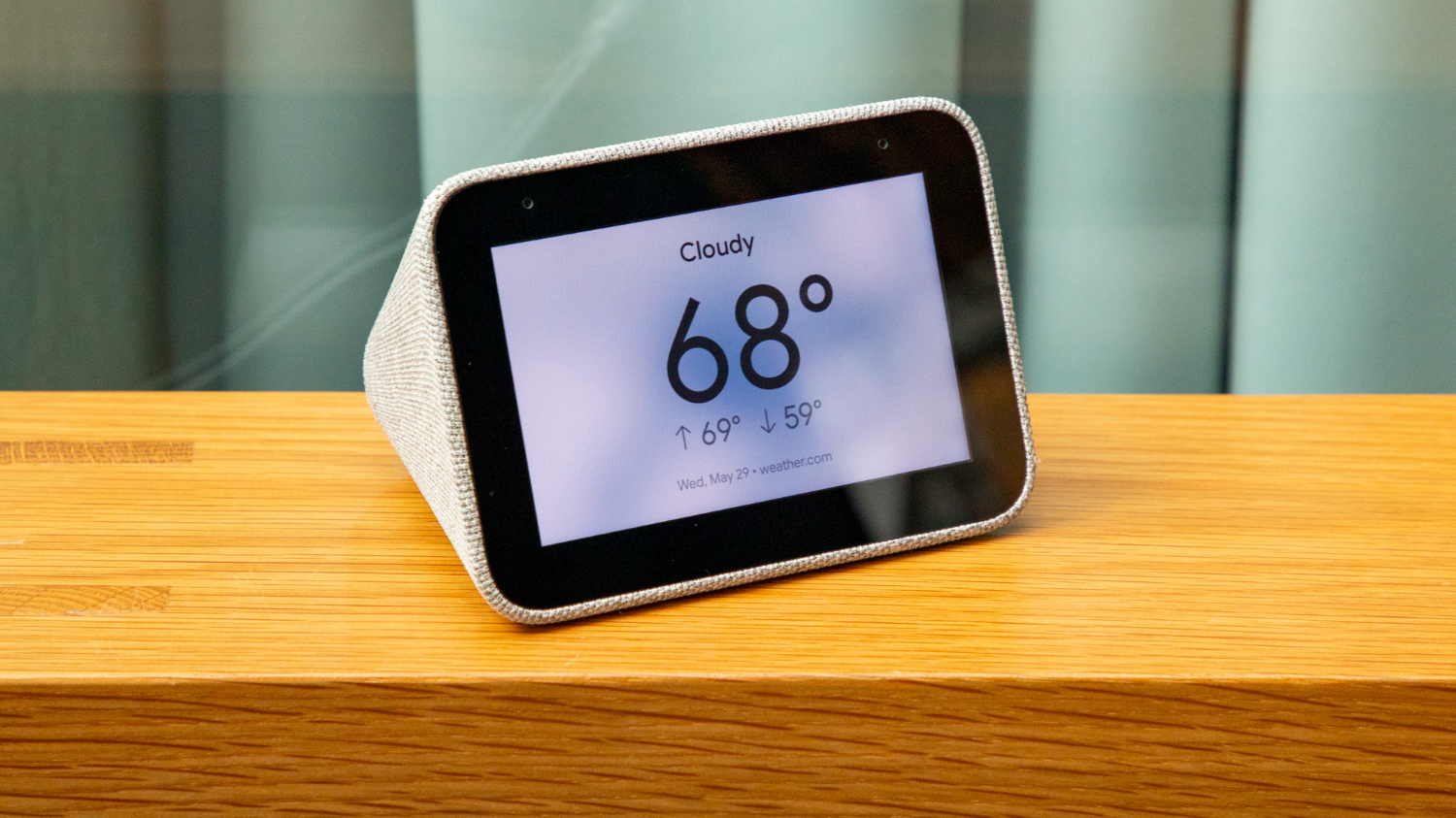
The Echo Show ($229), the Google Nest Hub (formerly Google Home Hub), the Google-powered Lenovo Smart Display, the JBL Link View, Facebook's Portal ($137) and even Amazon's clock-sized Echo Spot ($129) have all pushed the limits of what we thought a speaker could do. Each new release seems to cram in new features, from browsers and live TV to AI-powered video cameras to advanced and centralized smart-home control centers.
Lenovo's $79 Smart Clock sports both a touch screen and Google Assistant, but that's about where its similarities to these devices end. It's a clock. It's a very smart clock. And that's the best thing about it.
Design: Smaller than it looks
Don't be fooled by the pictures (I was): At 4.48 x 3.14 x 3.11 inches, this thing is small. You're not looking at an Echo Show or anything close to Lenovo's larger Smart Display. You're looking at an alarm clock, and one that can easily live on your nightstand or bedpost.
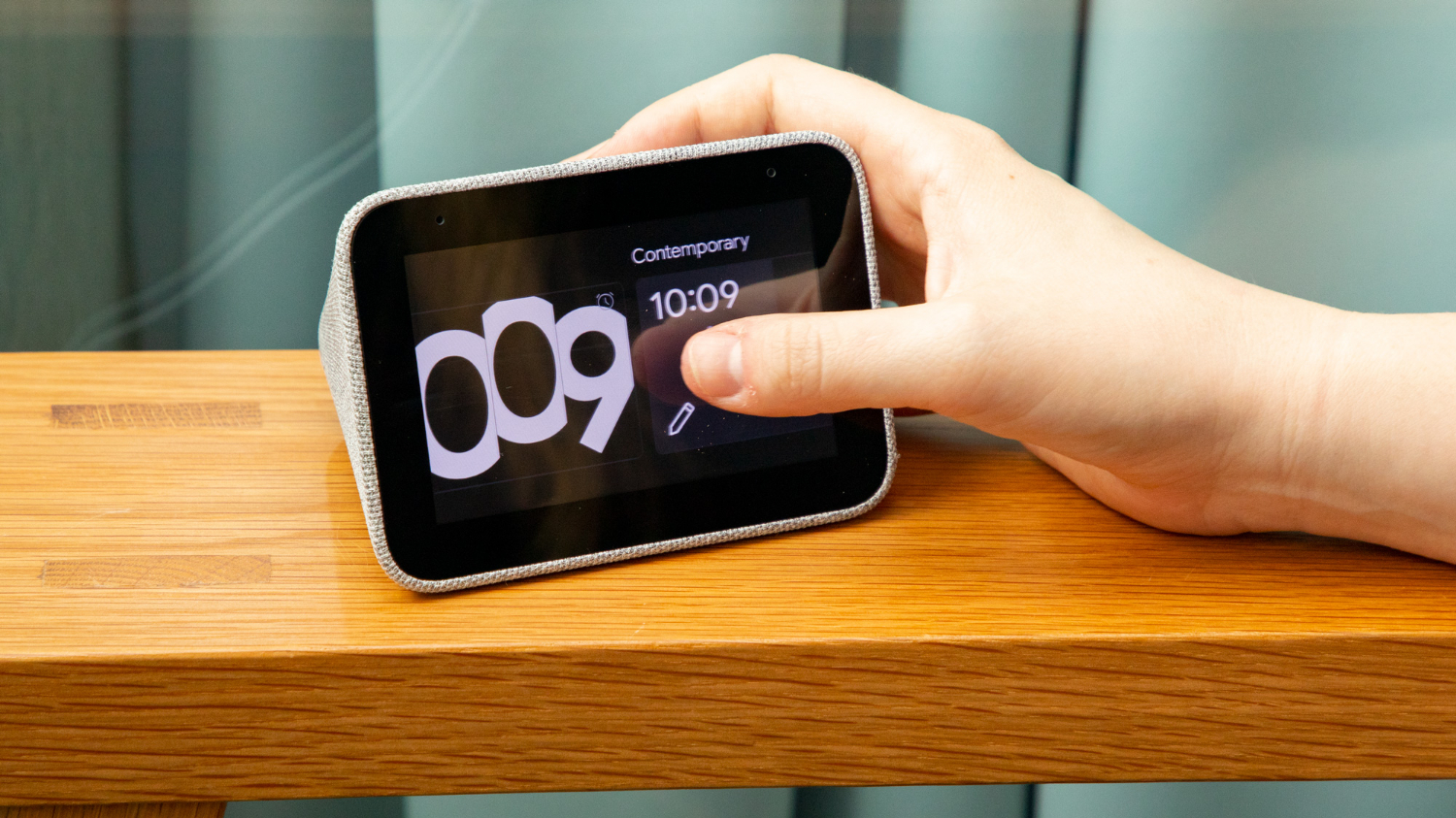
This clock has a 4-inch display, making it around the same size as Amazon's 4.1-inch Echo Spot. It's much smaller than the 10.1-inch Echo Show and even the 7-inch Google Nest Hub. It's even smaller than Amazon's new miniature Echo Show 5 (5.5 inches).
MORE: See our Lenovo Smart Frame review
Get instant access to breaking news, the hottest reviews, great deals and helpful tips.
The device is covered in a gray, soft mesh. It looks futuristic and very much at home among other Google Assistant products (including the Nest Hub, Google Home Mini and Max, and the 8-inch Lenovo Smart Display). It will probably blend in nicely with a modern home, but it's unlikely to stand out or wow your guests the way a brightly colored product might.
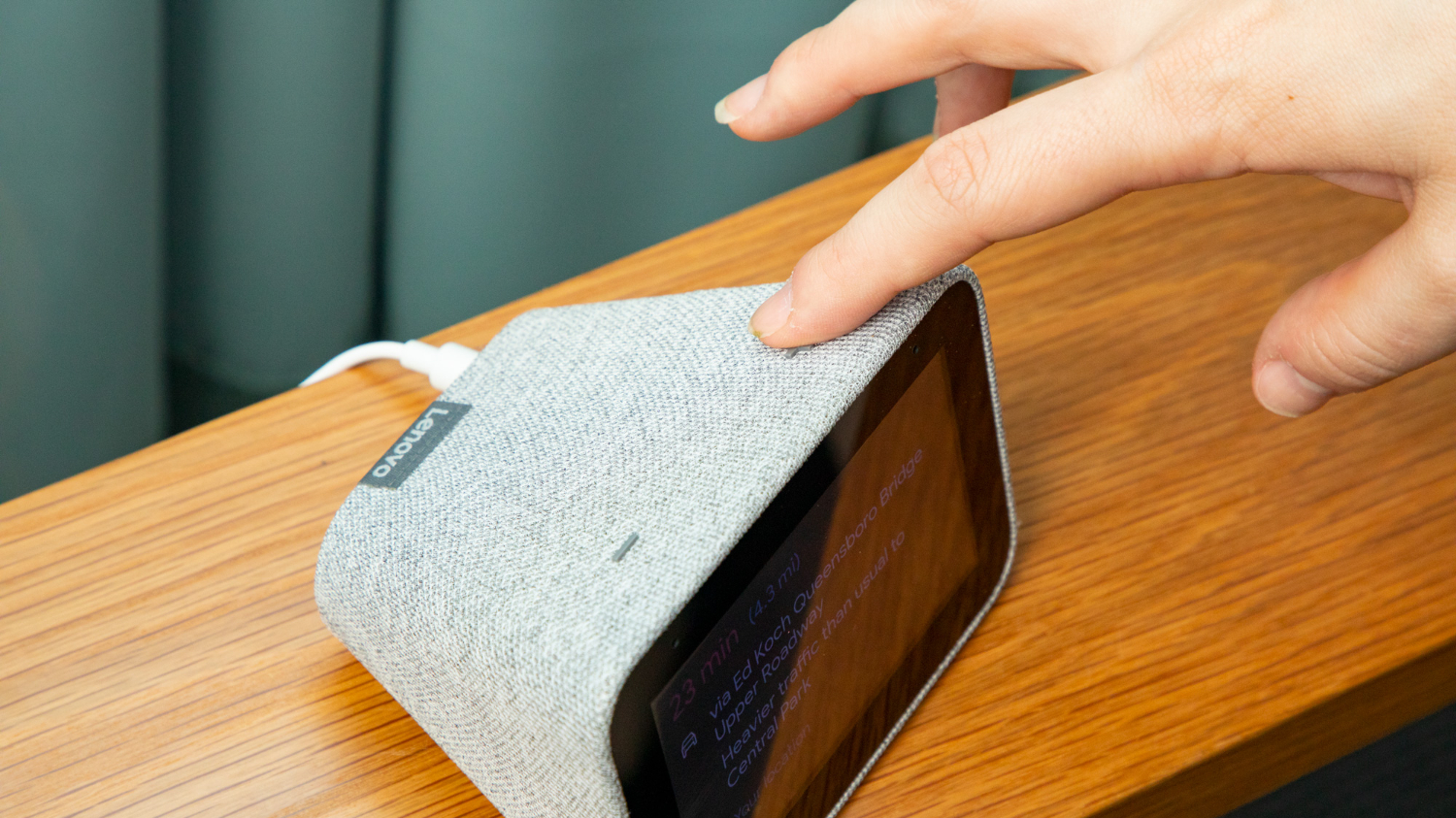
There are volume controls along the top of the Smart Clock. On the back are the power port, a slider to mute and unmute the microphone, and a handy USB charging port. There's no power button; the device turns on when you plug it in.
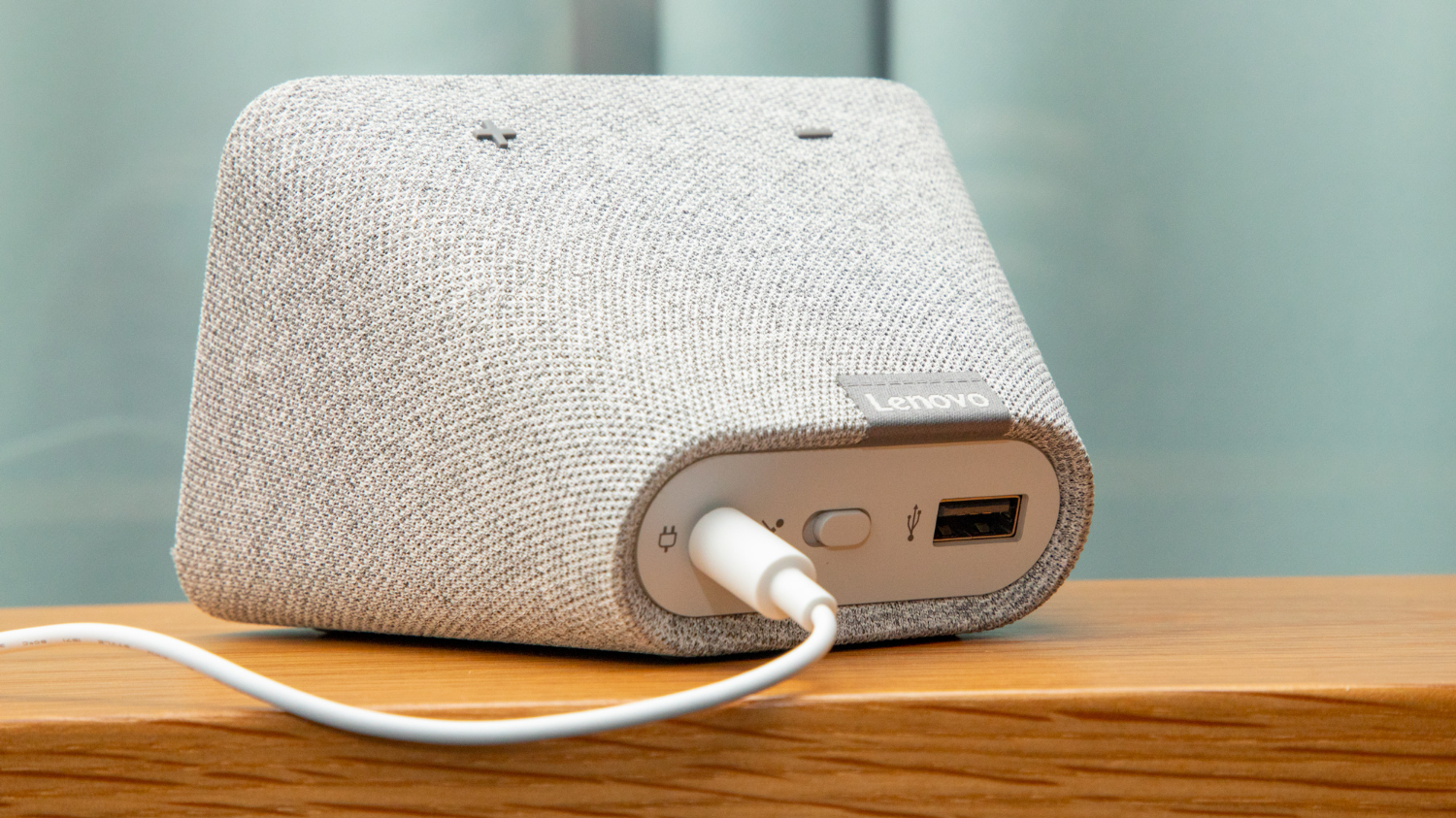
Oh, and there's no camera. Folks can take their own views on this. On the one hand, you can't make video calls. On the other, you don't have to worry about crooks (or Google) snooping on you. I tend to think the Lenovo Smart Display, which has a webcam and a built-in shutter to cover it, has found the best way to make everyone happy (Amazon's Echo Show 5 adopts the same solution).
But I also think Lenovo has made the right call in keeping a camera off this device. After all, does anyone really want to video chat with their alarm clock?
Interface: Charmingly simple
This device's home screen is a clock: no calendars, photos, reminders, or news items demanding your attention. Unlike displays such as the Echo Show and Nest Hub, which are constantly suggesting things I should do with them, I never got the sense that Lenovo's Smart Clock was forcing me to use it.

Long-press on the screen, and you'll pull up an interface where you can change the screen's design. There are around a dozen options, many of which are standard digital or analog clock faces, and many of which are quite creative. For example, one face displays the next few hours' weather on a backdrop that matches the forecast. Another writes out the time (e.g., "twelve thirty") in funky colors and fonts. The Clock also has a dark mode (as everything seems to these days).
Unlike the Echo Show and Nest Hub, which are constantly suggesting things I should do with them, I never got the sense that Lenovo's Smart Clock was forcing me to use it.
When I started testing the Smart Clock, I thought it might be nice to be able to customize the home screen with photos of my own. But after using it for a few nights, I realized this feature wouldn't serve much of a purpose. I want my clock to display the time; I don't need it to double as a photo album.
In fact, on the whole, the Smart Clock uses its screen far less than other smart displays do. Unlike the Nest Hub, the Smart Clock doesn't display the words you're saying as it hears them, though the Google Assistant icon does appear to indicate that it's listening. When you ask for directions, you'll see an ETA from Google Maps, but not the full directions. When you play music, you'll see the song's title with a blurred silhouette of its album cover in the background, but no lyrics. It will read you recipes, but won't display the instructions. It will display the morning's headlines, but not their accompanying articles or any graphics. It can't send text messages or check your email.
However, I found that none of this really bothered me. I don't need to ask my alarm clock to display directions or song lyrics — I can get those from other places.
What I do need my alarm clock to do is make my bedtime process easier, and here the Smart Clock excels. When you say "OK, Google, good night," the Clock dims its display and asks if you want to set an alarm for the next day. Then, it plays relaxing ambient sounds, which you can pause with controls on the screen. (If you have a nighttime routine set up through Google Assistant, Google can also dim the lights in your room, tell a joke and a number of other things). This feature is simple, but it's something I'd actually use every night.
Display: Rectangle beats circle
The Smart Clock's 400 x 800 screen delivers a sharper image than the Echo Spot's 480 x 480 display. I also prefer its rectangular shape to the Echo Spot's circle. Despite the fact that the Spot's circular face better imitates an actual clock, the rectangular display allows for more inventive clock-face designs.
The Echo Spot can play videos, while the Clock can't — but watching a video on such a small screen is so unappealing that I don't think this gives the Spot much of an advantage.
Like the Google Nest Hub, the Lenovo Smart Clock has an auto-brightness feature. However, while this feature greatly improved my experience with the Nest Hub's display, it didn't do as good of a job on the Smart Clock. I often found that the Clock's display was too dim when my lights were on, and I had to manually raise the brightness.
Timers and alarms
What's the most important aspect of an alarm clock? Alarms, of course. And here, the Smart Clock does a great job.
You can set alarms with your voice or through a clean and intuitive alarm interface on the screen. The Clock suggests the best alarms to set based on your alarm history and events in your calendar. You can instruct an alarm to trigger the beginning of your morning routine. You can also set a "sunrise alarm," and Google will gradually begin to brighten the display a few minutes before your alarm goes off, allowing your eyes to adjust.
MORE: Best Smart Speakers - Wi-Fi Speakers With Virtual Assistants
When your alarm goes off, it starts very quietly and slowly gets louder. This was a nice touch; it wasn't as jarring as my usual wake-up greeting, which is my phone blasting "Call Me Maybe." You can choose between a number of different tones, most of which were cheery and pleasant to wake up to. You can tap the top of the device to snooze it.
Alarms on the Echo Spot are more limited: There's no sunrise alarm, and no fade-in or physical-snooze function.
Another feature unique to the Smart Clock: nap timers. Press the "Nap Timer" button and the clock will automatically begin counting down from 20 minutes. I especially like this feature because it makes napping easy, but also encourages you to limit your snooze to 20 minutes.
Audio: Surprisingly strong
The Smart Clock has a 1.5-inch, 3-watt speaker with two passive radiators. That's not incredible when it comes to smart speakers (the Echo Show and larger Lenovo Smart Display have 2-inch and 1.75-inch, 10-watt speakers, respectively), but it certainly beats the Echo Spot's quarter-inch, 2-watt setup.
As smart displays and clocks go, I found the Smart Clock's audio to be excellent. In a side-by-side test, it delivered substantially better sound than the Echo Spot and was even a bit better than the Google Nest Hub.
When I listened to Labrinth's Beneath Your Beautiful on the Clock, not only were the vocals rich and clear, but I also heard a loud bassline that I’d never known existed in the song. With the Clock on my bedpost, the bass was so strong that I felt it rumbling through my mattress. The same bassline was inaudible on the Spot and barely audible on the Nest Hub, even when I was listening hard for it.
In a side-by-side test, Lenovo's Smart Clock delivered substantially better sound than the Echo Spot.
I had a similar experience listening to Eminem's Love The Way You Lie: The vocals and percussion filled the room on the Clock, while they were more muffled on the Spot and a bit tinny on the Nest Hub.
Where the Clock lacks a bit is in the midrange tones. When the Clock played One Direction's Midnight Memories, I couldn't differentiate one band member's voice from another, and they were all a bit muddled by the booming percussion and higher guitar lines.
Smart-Home Control
Google works with most major smart-home brands, especially now that Nest has been folded in. You can watch a Nest camera’s live feed on your clocks’ display, but Google says this feature will work with third-party brands in the future. There are a few Amazon devices you'll have to go without, such as Ring security cameras and video doorbells.
MORE: Best Google Home Compatible Smart Home Devices
Meanwhile, Nest devices do work with Amazon's devices such as the Echo Show. This is a category where there's no wrong answer; your preference for Alexa vs. Google may come down to which smart-home devices you already have. Check out our list of the best devices that work with Google Assistant.
Phone Calls
As mentioned earlier, you can't make video calls from this device. But you can make phone calls, and it's super easy. Just say to your clock, "Hey, Google, call 555-555-5555," and it will call the number immediately.
The clock understood me just fine. The device packs in two far-field microphones that work together to isolate voice (Lenovo wasn't able to confirm their size). My Clock heard me from 20 feet away without a problem.
I made a call to my iPhone 8 Plus, and the audio came through well. I thought my voice actually sounded better coming out of the smart clock than it did out of my iPhone, but quality was okay on both ends. Audio will, of course, depend on the strength of your signal and Wi-Fi network.
Google Assistant vs. Alexa
We've compared Amazon's and Google's voice assistants frequently over the years. In our most recent testing, Google came out ahead, but very narrowly.
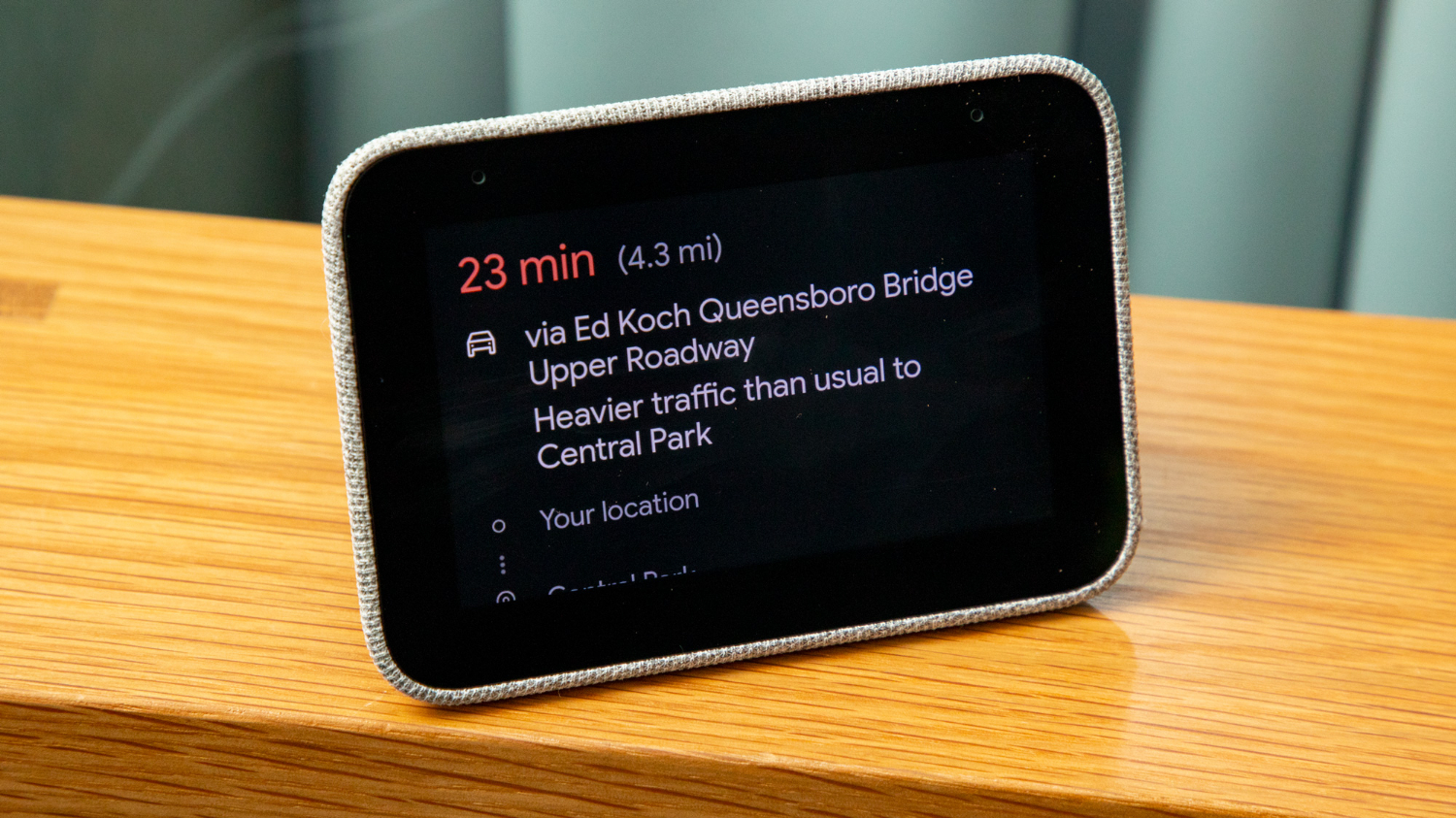
The two are evenly matched in ease of online shopping, communications and smart-home compatibility. Google comes out ahead in music offerings (Alexa doesn't support Google Play Music or YouTube Music; Google doesn't support Amazon Music), recipes, voice recognition (Google's Voice Match is far more sophisticated than Alexa's limited recognition service), and, of course, directions.
Alexa won narrowly in general knowledge as well as entertainment (Alexa can fully control all of Amazon's Fire TVs, while Google has only limited control over Chromecast devices) and extendability (Alexa offers more than 80,000 third-party skills, while Google Assistant has around 5,000).
At this point in their development, both Alexa and Google are fairly good and can probably do most of what you want them to do.
Bottom Line
Devices like the Echo Show, Nest Hub and even the Echo Spot are trying to do a lot of things. They want to be smart speakers, mini TVs, kitchen assistants, tablets and more. It's exciting to have so many options under your fingertips in one touch-screen device. But one also gets the sense, as I noted in my review of the Echo Show, that they don't know quite what they want to be.
The Lenovo Smart Clock does what it needs to: It's a clock. It's not a clock that also plays television, or a clock that you can also use to check Facebook. It's a simple, smart clock, and it's the first smart-home device I've reviewed this year where my overall impression is "I want this device, and I know what I'd do with it."
Credit: Tom's Guide
Monica Chin is a writer at The Verge, covering computers. Previously, she was a staff writer for Tom's Guide, where she wrote about everything from artificial intelligence to social media and the internet of things to. She had a particular focus on smart home, reviewing multiple devices. In her downtime, you can usually find her at poetry slams, attempting to exercise, or yelling at people on Twitter.
